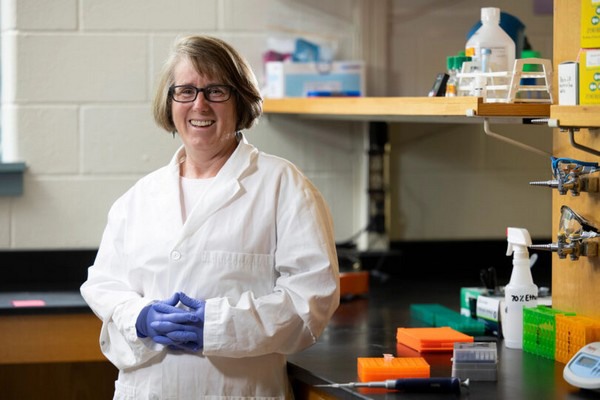A multidisciplinary team of researchers at the University of Georgia and two partner institutions have been awarded a $15.8 million grant over five years from the U.S. Department of Energy to re-engineer poplar trees (Populus sp. and hybrids) to be used as a sustainable energy source.
The researchers will use biotechnology approaches to breed the trees as a multipurpose crop that can be used for bioenergy, biomaterial, and bioproduct alternatives to petroleum-based materials. The grant is part of a larger $178 million DOE initiative to advance bioenergy technology.
“Currently, there is a growing need for sustainable sources of not only biofuels but also bioproducts and plant-based materials. Poplars are among the fastest growing trees in the United States and are important for both carbon sequestration and global carbon cycling,” said Robin Buell, principal investigator on the grant and the GRA Eminent Scholar Chair in Crop Genomics at the Center for Applied Genetic Technologies in the College of Agricultural and Environmental Sciences.

The UGA grant will fund five projects involving Buell and UGA faculty collaborators, including Wayne Parrott in the CAES Department of Crop and Soil Sciences; Chung-Jui Tsai and Bob Schmitz in the Department of Genetics; and Breeanna Urbanowicz in the Department of Biochemistry and Molecular Biology, all in UGA’s Franklin College of Arts and Sciences. External collaborators are Patrick Shih at the University of California, Berkeley, and Chris Dardick with the U.S. Department of Agriculture’s Agricultural Research Service.
The team will start by measuring mRNA transcripts in single cells — mRNA transcripts are portable strands of RNA that encapsulate the information contained in a gene — and will look at how the 3D DNA changes in single cells. From this, they will create a cell type-specific gene expression and regulatory map of poplar that will provide new information on gene function, Buell said.
Ultimately, the project aims to fabricate new types of poplar through genetic modification.
“What we propose is to genetically engineer poplar to make it a multipurpose crop by changing its architecture and engineering it to produce different things in the leaves and wood,” Buell said, adding that the team will try to engineer several different types of poplar trees in the study to take advantage of different plant materials — such as the wood or the leaves — for different uses. “We will generate poplar trees that have different architecture by changing their tree shape and ratio of leaves to wood. For example, we will make a bush like a hydrangea, a tree shaped like an apple tree, and a tree like a loblolly pine.”
Through biotechnology, plant materials harvested from the re-engineered architecture of the tree will be used to create products that have the potential to replace petroleum-based products. The DOE funding is supporting the research and development of bioenergy crops, industrial microorganisms, and microbiomes. Alternative clean energy sources like bioenergy play a key role in reaching the federal government’s goal of a net-zero carbon economy by 2050.
“Poplar has been studied for about 15 to 20 years by the Department of Energy as an energy crop,” said Buell. “They are fast-growing trees, and there is interest in poplar as a potential biofuel crop and for carbon sequestration. There could be a precursor for jet fuel in the leaves or compounds from the wood to use for polymers that are currently sourced from petroleum.”
For more information:
University of Georgia
www.uga.edu
